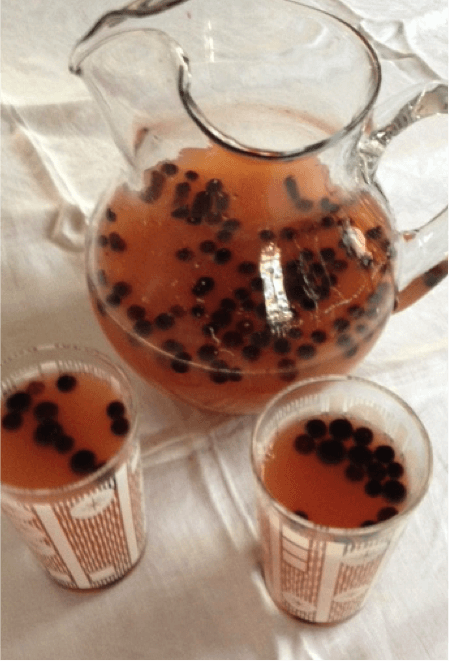One thing every Wild Blueberry grower loves, and that’s a honeybee!
Honeybees are getting ready for the kind of sweet indulgence that’s found only once a year on the barrens of Eastern Maine, Quebec and Canada. Over the next 20-25 days, no fewer than one billion honeybees – from Maine and “from away” – will descend upon tens of thousands of acres of Wild Blueberry Barrens.
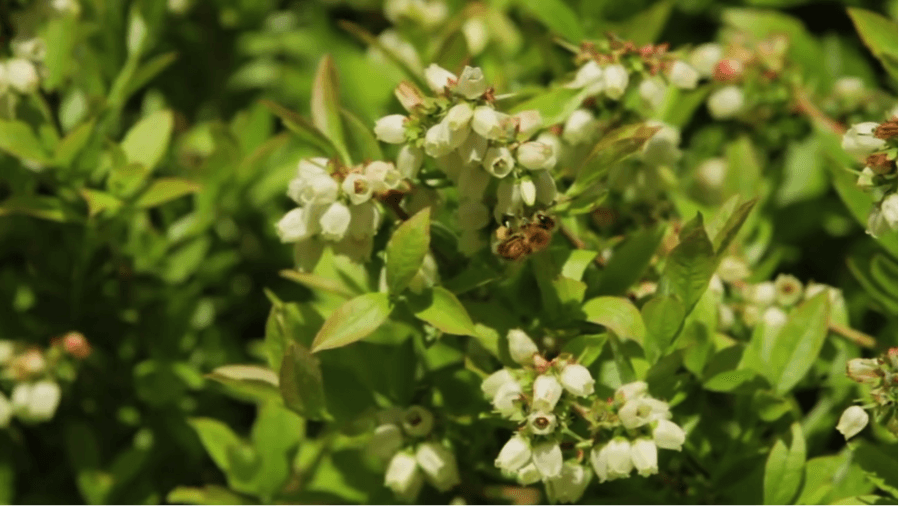
If you’re lucky enough to walk onto a barren in springtime, the experience will take your breath away. Imagine:
- 38 million tiny purple flowers per acre in bloom – that’s roughly 8,000 flowers per square yard;
- A constant humming of bees, like millions of stringed instruments tuning up;
- A beautiful gentle blur of soft little honeybees, as many as 300-per minute coming and going from each hive.
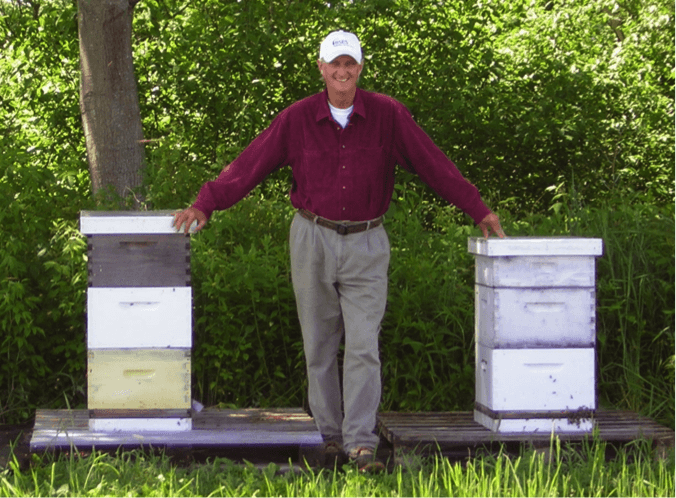
“It’s an auditory experience as well as a visual experience,” proclaims Frank Drummond, insect ecologist at the University of Maine and Maine’s leading expert on honeybees. With 25 years of academia under his belt, Dr. Drummond has a scholarly and profoundly intellectual knowledge of bees, but his passion for the little winged insect is downright contagious too!

Here, in 13 miraculous steps, is an abbreviated version of Dr. Drummond’s thesis:
- To be precise, first we have to back up a few months to mid-winter, when the Wild Blueberry growers make their annual contracts with beekeepers. Most of the honeybees come from out of state – places like Southwest Florida, Georgia, Texas, and California – but some of the growers like Greg Bridges of Bridges Wild Blueberry Farm, get their honeybees from Swan’s Honey in Albion, Maine. Swan’s has been providing honeybees to Wild Blueberry growers for generations and is renown for great bees and delicious honey.
- Then, cut to May, when the honeybees arrive on the barrens by the millions in tractor-trailer trucks.
- These flatbed trucks are huge, and in order to get the hives (each carrying between 50,000-60,000 bees) onto the barrens, they must be carefully transferred to smaller trucks for safe delivery to the barrens.
- This delicate transfer of the hives is usually done at night, when the bees are at home in their hives
- The next morning at daybreak if the air temperatures are above 50ºF, the honeybees venture out on an orientation flight. “They need to memorize where their hive is located, and they take a mental picture of it so they do not get lost on the way home,” says Drummond.
- The beekeeper, who travels with his bees, lets the honeybees settle for a couple of days – occasionally providing some extra syrup and pollen to support the bees after the long truck ride.
- Then, the bees go at it, working from sunup to sundown. Each bee will visit tens of thousands of flowers in one day. Almost all them are females. “It’s the Queen and all of her daughters,” laughs Drummond.
- As these “foragers” visit one flower after another, they drink nectar from the flowers, which they use for their own energy, and travel back to the hive to feed the larvae, which are hatched from the bee eggs laid by a single queen in each hive.
- The Queen bee lays an astounding 2,000 eggs per day, notes Drummond. And each of those larvae once hatched from the eggs needs to be fed!
- This is when the magic begins for the Wild Blueberry plants. As each busy little honeybee visits a flower, she drinks the nectar, gets some pollen on her face, and moves on to another flower. Then she sticks her head into a second flower and smears some pollen onto the sticky stigma of the second flower. This process ensures pollination of the plants!
- Specifically, each Wild Blueberry flower holds its own set of precious eggs, about 60 per flower, says Drummond. In order to ensure pollination of the plant, the flower requires 10-12 of its eggs to turn into seeds, and the honeybee is the carrier of the pollen, which allows this to happen.
- Germination occurs within a few short hours – the pollen goes into the plant’s ovary and fertilizes it, and the rest is history.
- Dr. Drummond confesses that the process is stunningly symbiotic. The honeybee is out for herself and feeding her young. The Wild Blueberry offers its flowers and needs the bee for pollination. “It’s a perfect union,” he says. From the pollinated flower, a fruit is formed and the more blueberry eggs fertilized, the larger the fruit.
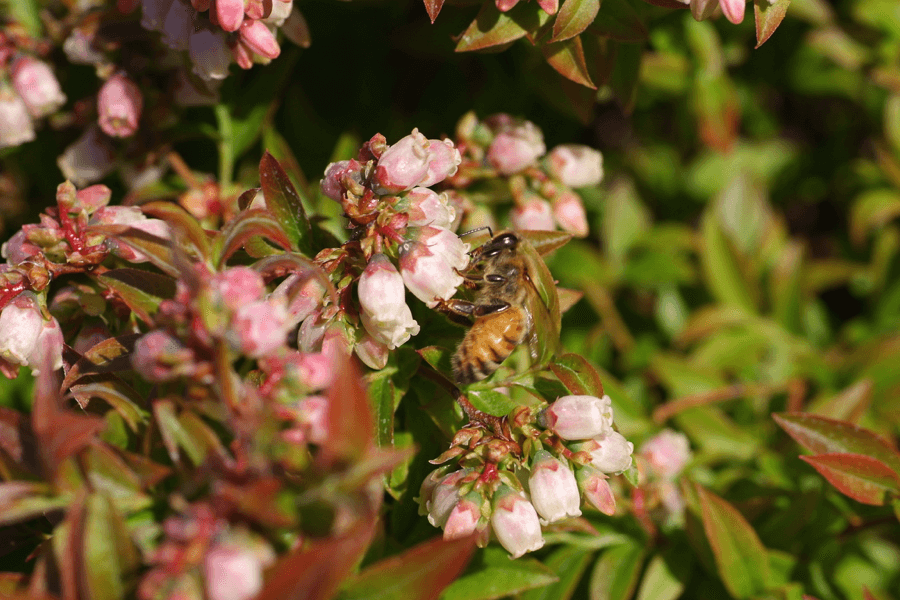
A 10,000-year-old ecosystem
We could not continue this ode to the honeybees without a few words from Dr. Drummond about the Wild Blueberry Barrens themselves. When asked what he loves most about Wild Blueberries his reply is inspiring.
“Well, I guess for me, the most amazing thing is that this Wild Blueberry ecosystem is really a direct result of the glaciers receding 10,000 years ago. When the glaciers formed, they scraped almost all of the good topsoil away and deposited it into the ocean,” he explains. What was left when the glaciers receded was this granite gravel that forms a perfectly inhospitable environment for growing anything except Wild Blueberries.
When Dr. Drummond beholds this glacial relic, he admits that the experience is somewhat mindboggling. “What’s left is this really yummy genetically diverse crop that we do not have to plant that has been here for thousands of years,” he exclaims. “You can take a handful from over here and a handful from there, each handful is different. Some are sweet, some are tart, some are almost black, some are light blue.” The genetic diversity of the barrens is astounding.
A word about colony collapse
It would be irresponsible to publish an article about honeybees without making mention of the Colony Collapse Disorder. As an insect ecologist, Dr. Drummond has much to share on the topic. Bee colony losses are very high this year (about 40% of all colonies perished), according to Drummond.
In Maine and Eastern Canada, a lot of growers have been working hard to minimize exposure of pesticides to honeybees, says Dr. Drummond. The Wild Blueberry Commission has provided funding to monitor honeybee health during pollination and there is an active program by growers to make sure that risks are reduced
Drummond explains that the cause of Colony Collapses appears to be what scientists refer to as a “multi-stressor effect.” In other words there has been a perfect storm of negative impacts on honeybees, including diseases, two particularly nasty parasites, a few pathogens and viruses, plus overexposure to the pesticides used in much of the nation’s large scale farms. “All of these factors seem to have contributed to the rapid declines we are seeing,” says Dr. Drummond. On top of that, honeybee populations have a small genetic basis to them, which means they cannot quickly adapt to an assault on their systems.
After spending time with Dr. Drummond, it’s clear we have much to lose if bees continue to decline in such staggering numbers, and we owe it to our ourselves to learn about and advocate for this magnificent winged insect.
Wild Blueberry Honey Recipe
In the spirit of support for this magnificent little winged insect, here is one tasty recipe to enjoy year round!
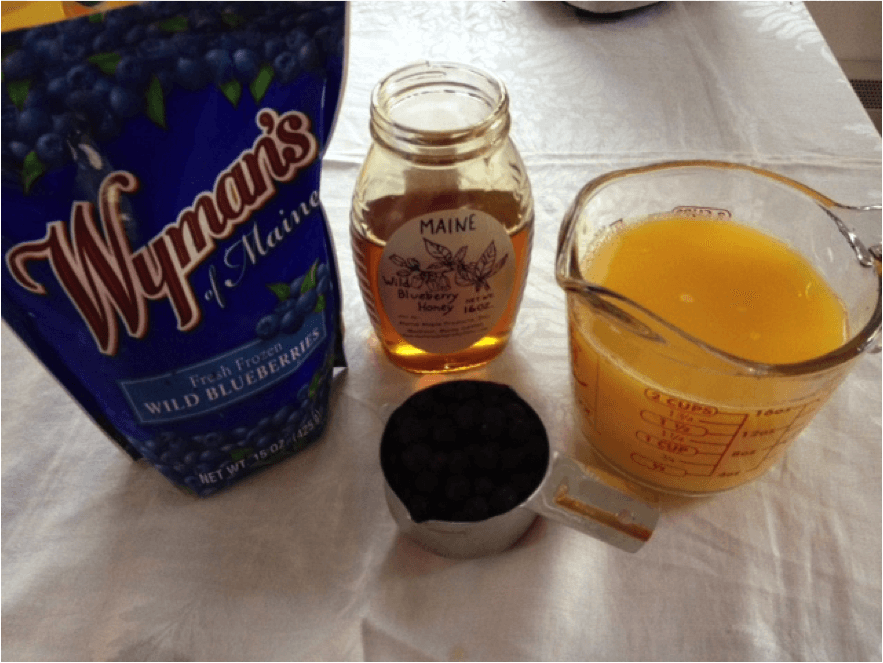
Honey, Orange & Wild Blueberry Thirst Quencher
Makes eight 8 once servings.
